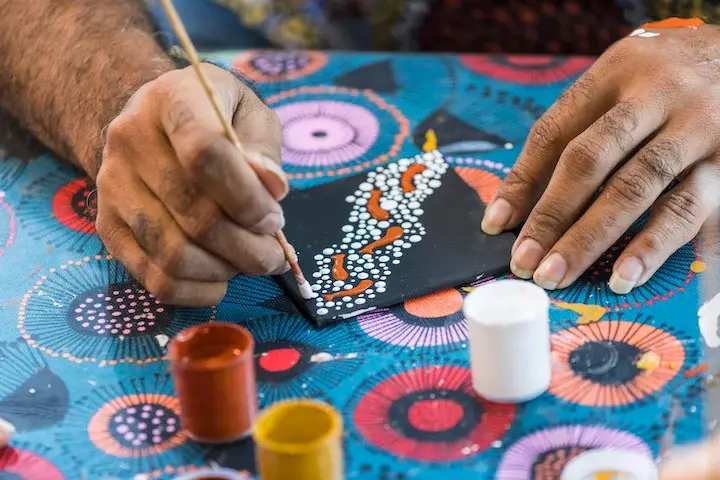The Human Element: Why AI Will Never Dominate the Creative Media Industry
- arikanidjar
- Mar 6
- 4 min read
The rise of artificial intelligence (AI) has stirred excitement and apprehension across various sectors, including the creative media industry. As technology advances, fears grow that robots may take over jobs that humans have traditionally held. However, the unique qualities of human creativity and emotional insight assure us that AI will not dominate this vital industry.
Understanding the Essence of Creativity
Creativity is the ability to generate original ideas or solutions. It covers a wide array of activities, including writing, painting, film production, and music composition. At its core, creativity is deeply tied to human experience and emotion, serving as a bridge between individuals.
AI systems can analyze vast amounts of data and recognize patterns. For instance, AI can compile best-selling novel elements to craft a story. Yet, they lack the personal experiences that shape true human creativity. For example, when Adele wrote "Someone Like You," she channeled her real-life heartbreak into a song that resonates with millions. An AI could generate a similar melody, but it cannot comprehend the emotional journey behind it. This lack of lived experience means AI often overlooks the intuition and subtleties that define human creativity.
Creativity is also about exploration and taking risks. While AI excels in optimizing existing ideas, its work is confined to defined parameters. Human creators, on the other hand, possess the freedom to journey into the unknown, experimenting with concepts beyond clear guidelines. They inspire others, pushing boundaries in ways that a machine simply cannot mimic.
Emotional Resonance: A Key Ingredient in Creative Work
One of the most significant distinctions between AI-generated content and human creations is emotional resonance. Emotional intelligence—the ability to understand and process feelings—plays a crucial role in creative expression. Creators draw upon personal experiences, societal insights, and emotional depth to produce work that truly resonates.
Take, for example, a film director aiming to evoke nostalgia. They might incorporate vivid personal memories, cultural references, and social contexts to craft a storyline that touches viewers’ hearts. An AI can analyze data on successful films but cannot grasp the emotions tied to human experiences or the complex dynamics of relationships involved.
The power of storytelling in literature or visual arts is grounded in authentic emotions. It requires empathy and insight into human nature—traits that AI lacks. As audiences increasingly seek genuine connections in their media, the demand for human-created content continues to grow.
Collaboration: The Fusion of Technology and Humanity
Rather than viewing AI as competition, it’s more effective to consider it a collaborative tool. AI can streamline certain processes, assist with research, or provide inspiration. However, it is human creators who infuse their vision, emotion, and artistic flair into the final piece.
For example, AI can generate screenplay ideas or suggest color palettes for a design project. The crucial element is how creators utilize this technology to enhance their artistry while retaining creative control. Those who welcome AI as a partner can leverage its capabilities, preserving the intrinsic human elements of creativity.
As technology advances, the relationship between AI and creative professionals will evolve into a partnership that fosters innovation instead of conflict. This collaboration can result in new artistic forms that merge human creativity with technological advancements.
The Unpredictability of Human Creativity
The unpredictability inherent in human creativity is another characteristic that AI cannot replicate. Creative breakthroughs often stem from inspiration, chance events, or unexpected interactions. These spontaneous moments are driven by human thoughts and emotions.
AI utilizes algorithms to make predictions based on existing data. Although it can produce impressive results, its outputs are confined to what has been programmed into it. In contrast, transformative “eureka” moments that lead to revolutionary art often defy predictability.
Consider Vincent van Gogh’s iconic painting “The Starry Night.” This masterpiece was not a predictable output of technical skill but rather an honest expression of his emotional turmoil during a challenging time. AI lacks the psychological struggles, joys, and rich life experiences that enrich human artistry.

Cultural Context: The Heartbeat of Creativity
Culture provides the context within which creativity thrives. Artists, musicians, and writers often reflect societal influences, drawing motivation from its triumphs, struggles, and intricacies. Human creators can infuse their work with cultural significance, crafting art that resonates with particular communities or social movements.
AI can analyze cultural trends but cannot engage with culture on a personal level. It may spot patterns, yet it cannot understand the implications or significance behind them. Creative work rooted in cultural context requires insight and empathy—qualities that AI simply does not possess.
As cultures continue to evolve, the demand for creators who can navigate complex landscapes will grow, ensuring that the human touch remains irreplaceable in the creative media sector.

The Path Forward
As AI advances, it will certainly continue to play a role in the creative media industry. However, its potential to eclipse the human aspect of creativity is limited. The essence of creativity lies in personal experiences, emotional depth, unpredictability, and cultural significance—all of which are uniquely human traits.
Moving forward in this tech-driven world, the creative media landscape will likely observe a new collaboration between human creators and AI tools. This partnership will enhance artistic possibilities rather than replace the rich tapestry of human creativity that has defined our culture for centuries. Ultimately, it is not the technology that shapes creativity; rather, it is the human element that continues to breathe life into art and media.






Comments